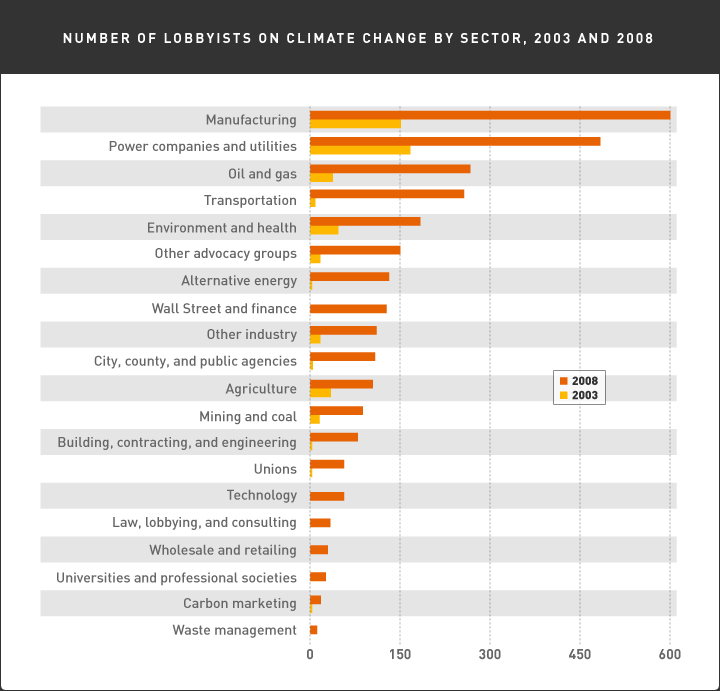The Union of Concerned Scientists released a September 2007 report called “How to Avoid Dangreous Climate Change” in which they acknowledged that a “450 ppm CO2 eq stabilization target should represent the upper limit on concentrations of heat-trapping emissions set by any policy that seeks to avoid dangerous climate change.” They examined current policy proposals before Congress and concluded that no current proposal would “come close to meeting the proposed lower end of the US emissions budget range.” To fit within the required “budget” these scientists suggest that the “global economy must undergo a profound technological transformation and substantially reduce its emissions from fossil fuels.”
A recent Congressional Research Service report called “Climate Change: Current Issues and Policy Tools,” suggested that the US policy on climate change could influence and support global cooperation in future climate change discussions. In discussing the myriad policy options to addressing US’ response to climate change, this CRS report aknowledges what the Union of Concerned Scientists’ report failed to consider: the “pressures from interest groups” on legislators. Without attempting to understand what it will take to manuever through the unyielding pressure of US interest groups and their lobbyists, identifying preferred stabilization targets is a moot point.
A study by the Center for Public Integrity showed that there is an increase of more than 300% in the number of lobbyists on climate change in just five years in the United States. The Center also estimated that the lobbying expenditures on climate change exceeded $90 million. The industries represented by the lobbyists vary significantly, as “virtually every segment of the economy was seeking to weigh in.” The makeup of the lobbyists include manufactruers, coal companies, electriciy companies, insurance companies, private equity firms, Wall Street banks, unions, and even environmental groups. The environmental lobbyists and alternative energy lobbyists together are outnumbered by all other interestsby more than 8-to-1.
Many fear that the comprimises that will be sought between the varied interests will “forestall the sort of aggressive (legislative) action that is really needed.” NASA’s Jim Hansen warned that the “danger is that special interests will dilute and torque government policies causing the climate to pass tipping points, with grave consequences for all life on the planet.”
It is necessary to understand the influence of these special interests groups on US climate policy to understand upcoming international negotiations. For example, on Wednesday, September 30, 2009, Democrats in the United States Senate proposed new climate legislation sponsored by Senator Boxer and Senator Kerry. It is a “cap-and-trade” bill that would require a 20% emissions reduction from the 2005 levels. Though a step in the right direction, the bill still has the “stench” of special interests, will likely “require concessions to appease advocates for the oil industry, nuclear power industry, manufacturing industry, and other industries,” and will probably not be debated on the floor until 2010. This means that the US would enter the international negotiations in Copenhagen without a offering domestic leadership on the issue.
Until US climate policy officials and US Congress can escape the influence of powerful lobbyists, US and International negotiations are bound to fail. One person who recognizes that the climate change problem is mostly a “political” problem is billionaire George Soros. he recently donated $100 million to establish a Climate Policy Initiative to “serve as a global climate watchdog against special interests.” At least someone is stepping up to special interests.
Tags: cap and trade, coalitions, lobbyists, Public Policy, US Energy Policy
